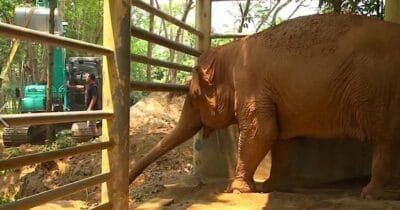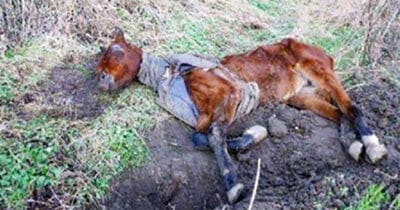
For over a century, a tortoise species native to the Galápagos was thought to be extinct — but recently, in a major discovery, biologists have confirmed that the species is still alive thanks to the discovery of a female tortoise.
According to a paper published in Communications Biology, a species of giant tortoise known as Chelonoidis phantasticus, or the “Fantastic Giant Tortoise,” was discovered in 1906 on Fernadina Island, from a single specimen found by explorer Rollo Beck on an expedition.
The species was distinguished by unique physical characteristics of the shell found on the male sample, with extreme flaring and pronounced saddlebacking.

However, another tortoise of the species was never found. Fernadina Island is considered one of the most pristine islands in the world, and despite anecdotal evidence, the island’s lava fields made extensive exploration difficult, shrouding the species in mystery for decades.
“Whether the Fernandina tortoise lives on has intrigued biologists for over a century,” the report says.
With no other tortoises of the species ever discovered, the “Fantastic Giant Tortoise” was long discovered extinct — until a recent discovery changed everything.
A female tortoise, about 50 years old, was found in 2019 on Fernandina Island. While she didn’t have the distinctive characteristics of the original tortoise due to stunted growth, biologists believed she could be a Fantastic Giant Tortoise.
They sequenced the genomes of both the newly-discovered female and the 1906 specimen, and found they were of the same lineage. The Fantastic Giant Tortoise isn’t extinct after all: there is at least one living member of the species.
“The significance of the find is huge,” Evelyn Jensen, a lecturer in molecular ecology at Newcastle University and co-author of the research paper Stephen Gaughran, told Insider.
“To find that a species of Galápagos tortoise that was thought to be extinct for over 100 years is not in fact extinct, but lives on, was truly amazing.”
“Everything that we knew about this species said it was extinct,” co-author Stephen Gaughran, an ecology and evolutionary biology researcher at Princeton University, told The Guardian. “So it’s a big deal for a species that we thought was extinct for a hundred years to suddenly appear here.”
It’s always great to hear that a species thought to be extinct is still alive — and the finding is especially exciting for biologists, and could be the key to further understanding this tortoise species.
“The finding of one alive specimen gives hope and also opens up new questions as many mysteries still remain,” Adalgisa Caccone, a senior research scientist and lecturer in Yale’s Department of Ecology & Evolutionary Biology and senior author of the study, told Yale News.
“Are there more tortoises on Fernandina that can be brought back into captivity to start a breeding program? How did tortoises colonize Fernandina and what is their evolutionary relationship to the other giant Galapagos tortoises?”
How incredible — a species thought to be extinct for 100 years, found alive after all this time!
Congrats to all the biologists and researchers on this incredible find that will certainly help us understand this mysterious tortoise species.
Share this incredible news! 🐢






